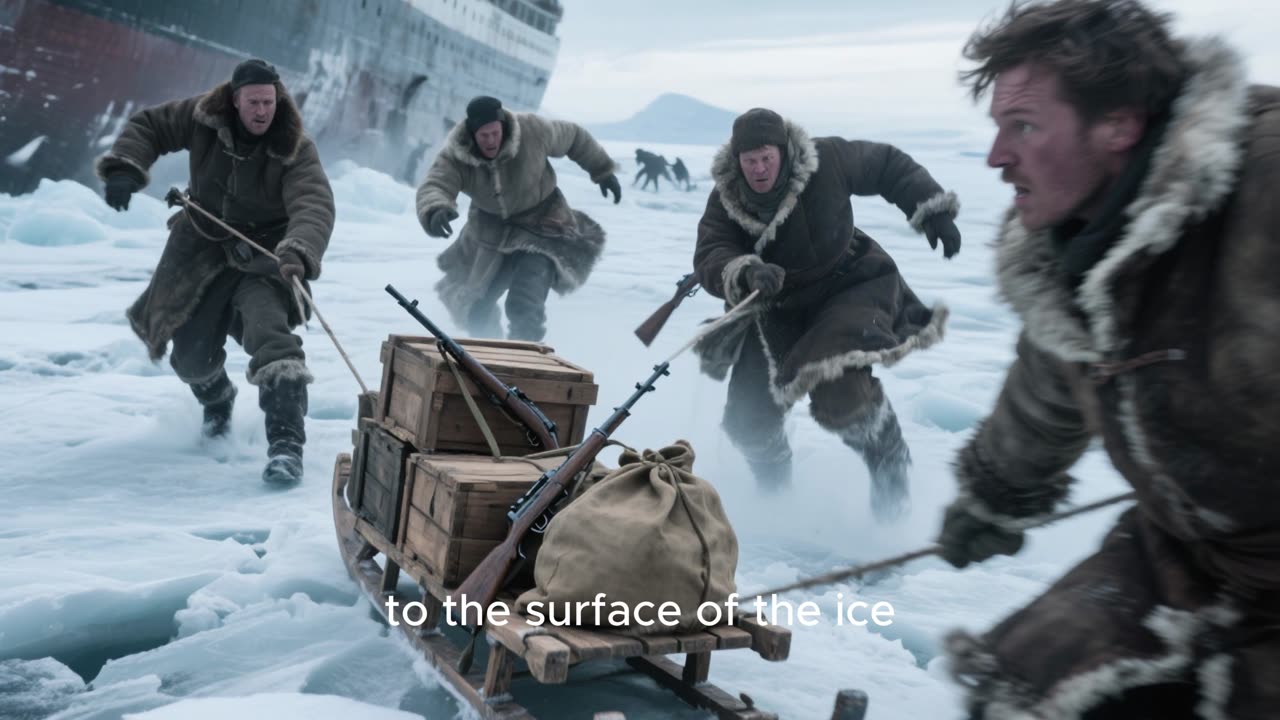Premium Only Content

The Shipwreck of the Karluk
Adrift in the Frozen Deep
The sea has always been both a promise and a curse. It lures people with dreams of discovery and freedom, then tests them with storms, hunger, and ice. In 1913, a group of explorers set out into the Arctic on a mission of science and adventure aboard a sturdy ship called the Karluk. They were chasing knowledge—mapping the last unknown corners of the northern world—but what they found instead was a long, terrible fight for survival, frozen in time and in history.
The Karluk was led by Captain Robert Bartlett, a seasoned sailor from Newfoundland known for his toughness and calm command. The expedition’s leader was Vilhjalmur Stefansson, an ambitious explorer who believed the Arctic could one day be colonized. The ship left Canada in the summer of 1913, carrying scientists, crew, and dreams of discovery. But the Arctic is a land that waits for no man, and by September, the Karluk was trapped in drifting ice just north of Alaska. The sea closed around it like a fist, locking the ship in place.
At first, the crew believed the ice would loosen with the next thaw. They passed the time conducting experiments, hunting seals, and writing in journals. But the days grew shorter, the cold sharper, and the realization settled in—they were stuck for the winter. The Karluk creaked and groaned as the ice pressed tighter. Frost formed on the walls. Food supplies began to run low. When Stefansson left the ship with a small group to hunt and never returned, Captain Bartlett took command completely.
Then, in January 1914, the ice finally claimed the ship. The pressure was unbearable. With a sound like thunder, the hull cracked open, and freezing seawater poured in. The men scrambled to the surface of the ice, dragging what supplies they could—sleds, rifles, and what little food remained. The Karluk sank beneath them, disappearing into the black Arctic sea, leaving them stranded hundreds of miles from land on a drifting sheet of ice.
Bartlett looked at the horizon and saw nothing but white and gray. There was no rescue coming. Their only hope was to march toward Wrangel Island—an uninhabited speck of land they believed lay somewhere to the west. The journey was brutal. Temperatures dropped to fifty below zero. The ice shifted and cracked beneath their feet, splitting open without warning and swallowing tents, sleds, and men. They built makeshift shelters from snow and huddled together at night, their breath freezing in the air.
Hunger gnawed at them constantly. They shot seals and polar bears when they could, but the cold made even cooking a struggle. Some men began to lose hope, their minds slipping into despair. One morning, a sailor simply walked away from camp into the fog and was never seen again. Another froze to death in his sleep, his body curled in a silent prayer. Bartlett, calm and unyielding, buried them all with the same quiet respect. He promised the survivors he would find a way out—and they believed him, because he never allowed fear to show on his face.
After weeks of drifting, the ice began to carry them closer to Wrangel Island. Bartlett made a decision that would define his life: he would take one Inuk hunter and set out across the ice to reach Siberia—more than 700 miles away—and bring help. The journey was madness, but it was the only chance. He left the others behind with supplies and a promise that he would return.
The crossing was one of the most dangerous treks in Arctic history. Bartlett and his companion faced blizzards that blinded them for days, winds that cut through every layer of fur, and stretches of open water where they had to leap across floating ice or die in the freezing sea. Their hands were frostbitten, their faces cracked and bleeding, but they kept moving, guided by stars and instinct. When their food ran out, they ate scraps of leather and bits of frozen seal fat. Finally, after nearly fifty days, they reached the coast of Siberia, half-dead but alive.
From there, Bartlett found help—local Chukchi hunters who guided him to a Russian outpost where he could send a message for rescue. It took months for ships to reach Wrangel Island, but when they did, they found eleven survivors—gaunt, frostbitten, but breathing. The rest had perished in the cold. When Bartlett returned, the men greeted him not as a captain but as a savior. He had kept his word.
The Karluk never rose again from the sea, and the Arctic buried most of its dead in ice. But the survivors’ story lived on, told in whispers by sailors and explorers who understood what it meant to face the endless white and come back changed. Bartlett was hailed as a hero, though he never saw himself as one. He said the Arctic was the true captain, and men were only passengers in its frozen kingdom.
Even now, more than a century later, the wreck of the Karluk still lies somewhere beneath the Arctic Ocean, locked in ice and time. Its story reminds us that courage is not the absence of fear, but the act of walking forward when every instinct screams to stop. The sea may take, the ice may crush, but the human spirit—fragile, stubborn, and eternal—can still endure.
-
 LIVE
LIVE
Barry Cunningham
3 hours agoBREAKING NEWS: WATCH PARTY WITH PRESIDENT TRUMP ON THE LAURA INGRAHAM SHOW (AND MORE NEWS)
8,800 watching -
 LIVE
LIVE
RiftTV
1 hour agoFBI Director Kash Patel Sues Elijah Schaffer for $5 MILLION?!
1,181 watching -
 50:26
50:26
BonginoReport
7 hours agoElections Post-Mortem with Mayor Scott Singer - Nightly Scroll w/ Hayley Caronia (Ep.174)
52.3K19 -
 45:54
45:54
Donald Trump Jr.
5 hours agoGood Luck Chuck! The Left Lashes Out Over Shutdown Scheme's Failure | Triggered Ep.290
87.1K66 -
 LIVE
LIVE
The Jimmy Dore Show
2 hours agoDems CAVE On Gov’t Shutdown — Or Do They? Trump GASLIGHTS About Rising Food Prices! w/ Nick Cruse
8,123 watching -
 LIVE
LIVE
BIG NEM
6 hours agoDajana Gudic: Surviving the Bosnian War to Woke California
36 watching -
 LIVE
LIVE
LFA TV
22 hours agoLIVE & BREAKING NEWS! | MONDAY 11/10/25
555 watching -
 22:01
22:01
Jasmin Laine
5 hours agoCBC Host ABRUPTLY ENDS Interview After Guest Says: “That Isn't True”
5.69K5 -
 1:20:47
1:20:47
Kim Iversen
3 hours agoMAGA = Make Antisemitism Great Again?
108K109 -
 1:06:09
1:06:09
Tucker Carlson
7 hours agoUS Government Admits Chemtrails Are Real (It's Worse Than You Think). Dane Wigington Reveals All.
39.2K149